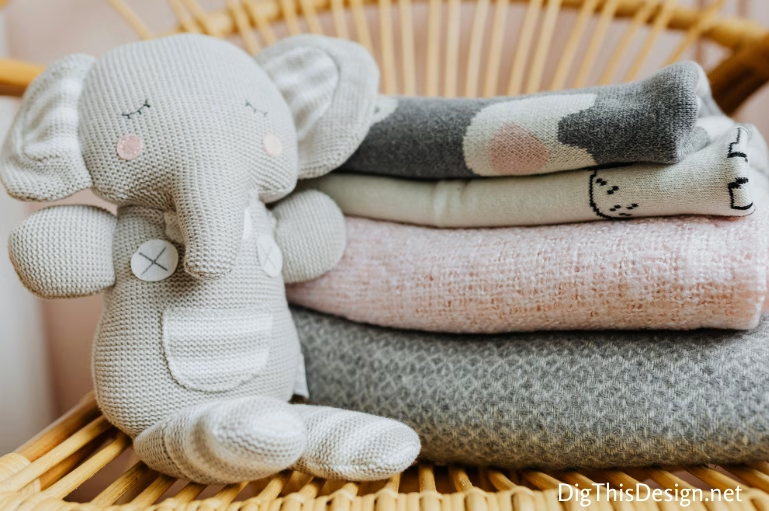Soft toy hygiene is so important for your family’s health. Soft toys and blankets are a source of comfort for people of all ages. Whether it’s a child’s beloved teddy bear or an adult’s favorite throw blanket, these items offer warmth, security, and emotional well-being. But despite how clean they might look, these comforting companions can harbor a surprising amount of dirt, bacteria, and allergens. This raises an important question: Are your soft toys and blankets safe from a hygiene standpoint?
Why Soft Toy Hygiene is Important

The Hidden Risks of Comfort Items
We often associate dirt with visible grime or foul odors. However, many hygiene risks are invisible to the naked eye. Soft toy hygiene is often overlooked, even though soft toys and blankets, especially those in regular use, are prime real estate for:
-
Dust mites
-
Dead skin cells
-
Pet dander
-
Body oils and sweat
-
Food particles
-
Bacteria and even mold spores
According to microbiologists, soft fabrics create a porous environment where moisture and organic matter (from human contact or spills) provide the perfect breeding ground for bacteria and fungi. Items like teddy bears that children sleep with, take to school or daycare, or play with on the floor are particularly prone to contamination, making soft toy hygiene critical for a healthier home environment.
Children’s Toys: High Risk, Low Awareness
Children’s immune systems are still developing, making them more susceptible to infections and allergies. Yet, their favorite stuffed animals are rarely cleaned with the same diligence as other household items. Practicing consistent soft toy hygiene can significantly reduce their exposure to harmful microbes.
One UK study found that more than 80% of stuffed toys carry potentially harmful bacteria, including coliforms, which are associated with fecal contamination. Shockingly, 25% of parents admit to never washing their child’s soft toys—even after the toys have been dropped on the floor or taken outdoors. These findings highlight the urgent need for better soft toy hygiene practices, particularly for children’s everyday items.
Adult Blankets: Hidden Hygiene Hazards
While we tend to wash our clothes regularly, blankets and throws often escape our cleaning routines. These fabrics can absorb sweat and skin flakes night after night. Without routine laundering, poor soft toy hygiene habits can extend to throw blankets, allowing microbial buildup that may trigger allergies or respiratory issues.
Experts recommend washing blankets at least once every two weeks, but surveys show that many people go months without laundering them. For those who frequently nap with soft comfort items, integrating soft toy hygiene into your cleaning routine is essential for minimizing long-term exposure to allergens and irritants.
Signs That It’s Time for a Wash
You might not always be able to see or smell contamination, but these signs suggest that your soft toy or blanket needs cleaning:
-
A musty or “old” smell
-
Visible stains or discoloration
-
Allergy flare-ups or skin irritation
-
Increased sneezing, especially around bedtime
-
Pet hair embedded in the fabric
To maintain good soft toy hygiene, items that have been in contact with vomit, urine, or outdoor surfaces should be cleaned immediately.
How Often Should You Wash Them?
The ideal cleaning frequency depends on how often the item is used and who uses it:
-
Children’s soft toys: Every 1–2 weeks if used daily
-
Adult-use blankets: Every 2–3 weeks
-
Guest blankets: After every use
-
Stuffed toys used occasionally: Once a month or after illness
If someone in your household is sick, proper soft toy hygiene means washing any shared blankets or soft toys they’ve used right away.
Safe Cleaning Methods for Soft Toy Hygiene
Maintaining soft toy hygiene requires careful attention to material and manufacturer instructions. Here’s how to clean common comfort items safely:
1. Machine Washable Toys and Blankets
Use a gentle, fragrance-free detergent to avoid skin irritation. Wash in warm water (not hot) to eliminate most bacteria without damaging fibers. Dry thoroughly—either tumble dry on low heat or hang in sunlight, which naturally kills germs.
2. Hand Wash or Spot Clean Items
For delicate toys or older blankets, use a mild soap and lukewarm water. Scrub gently with a soft brush or cloth. Let them air dry completely to prevent mildew and uphold soft toy hygiene standards.
3. Disinfecting Without Washing
If a toy can’t be washed, consider disinfectant sprays safe for fabrics. Use UV sanitizers for quick, chemical-free sterilization. Freezing plush toys in a plastic bag for 24 hours can also kill dust mites. Always check labels first, especially for toys with batteries or electronic components.
Long-Term Hygiene Tips
Good soft toy hygiene doesn’t stop at occasional washing. Here are some habits to adopt:
-
Rotate toys and blankets so the same ones aren’t used constantly
-
Store blankets in a clean, dry area when not in use
-
Use pillow protectors or covers on stuffed animals
-
Avoid eating while using soft toys or blankets
These practices go a long way toward preventing contamination and preserving cleanliness.
When to Say Goodbye
Even with proper soft toy hygiene, some comfort items eventually need to be replaced. If a soft toy has:
-
Persistent odors after washing
-
Torn fabric or exposed stuffing
-
Signs of mold or mildew
-
Broken electronic components
…then it’s time to let it go. Sentimental value is understandable, but health should always come first.
Conclusion
Soft toys and blankets are cherished parts of our lives, offering emotional support and physical comfort. But their very nature—soft, absorbent, and always within reach—makes them prone to contamination. Soft toy hygiene is essential to ensure these comforting items remain safe and healthy to use. With just a few small changes to your cleaning habits, you can enjoy the warmth of your favorite comfort items without compromising your well-being.





